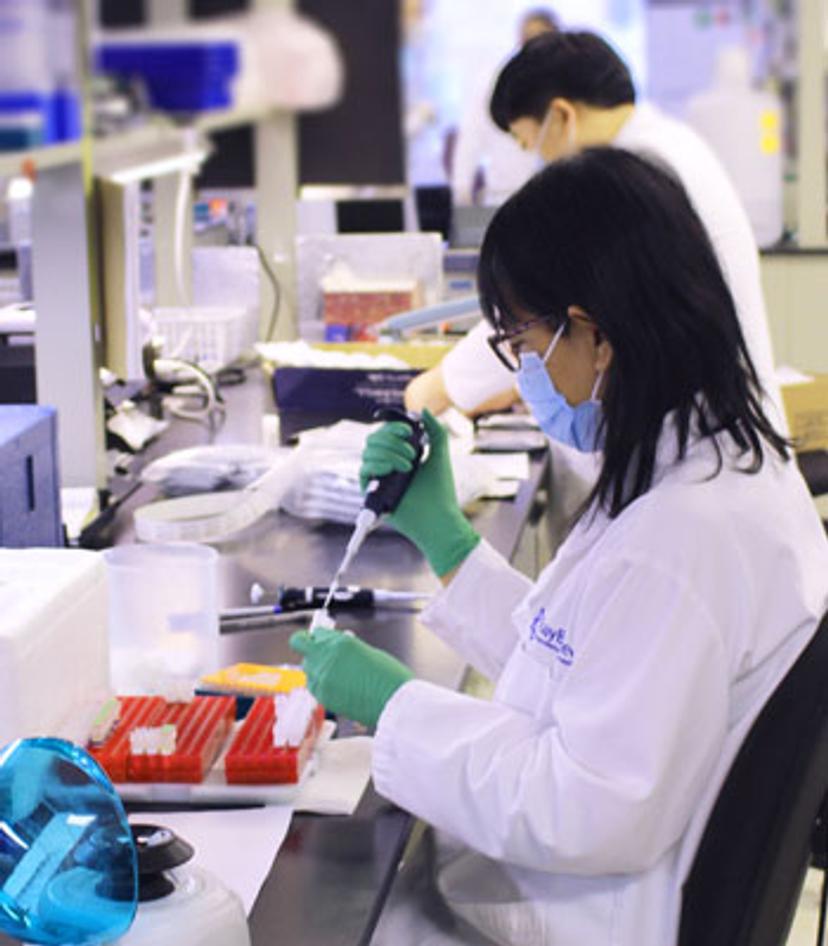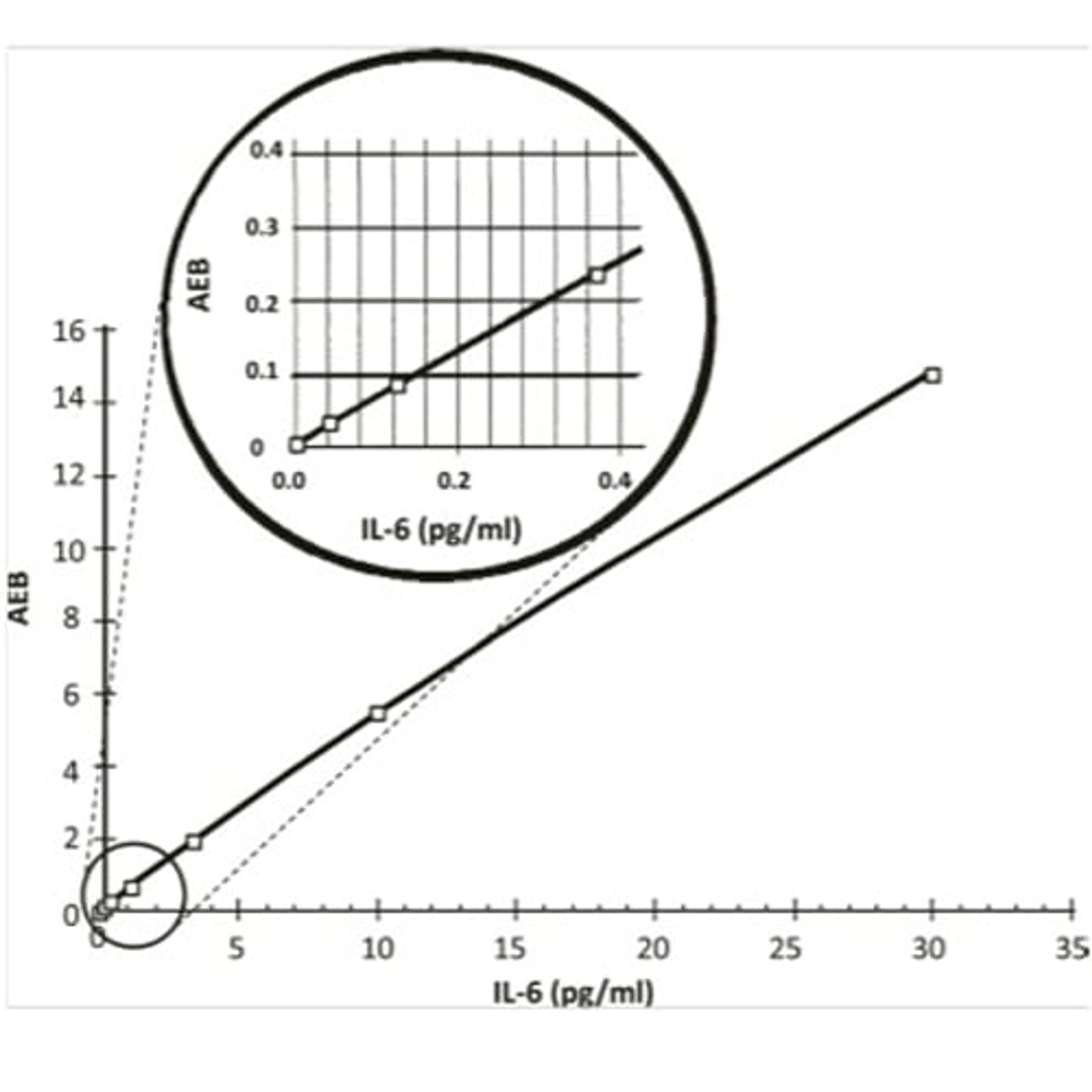Alternatives to ELISA: Ultrasensitive immunoassays that use less sample volume and offer higher sensitivity
Discover how ultrasensitive immunoassays Immuno-Quantitative ELISA and SIMOA could accelerate your biomarker research
5 Sept 2022
Dr. Valerie Jones, Sales, Marketing, and Technical Support Director at RayBiotech
Although traditional colorimetric enzyme-linked immunosorbent assays (ELISA) are the gold standard for protein detection in biomarker research, there are now more sensitive options available for detecting and quantifying physiological proteins, specifically those present in low abundance.
These ultrasensitive immunoassays include Immuno-Quantitative ELISA (IQELISA™), a real-time PCR-based assay, and digital single molecule array (SIMOA™), a bead-based ELISA assay. In this SelectScience® article, we dig deeper into these next-generation immunoassays, speaking with scientist-turned-industry professional, Dr. Valerie Jones, Sales, Marketing, and Technical Support Director at RayBiotech, a leading manufacturer of multiplex immunoassay technologies.
Below, we highlight how these ultrasensitive immunoassays work, when they are most applicable, and why labs may benefit from choosing these assays over standard ELISAs.
With standard ELISA widely used in biomarker research, what are the reasons to consider ultrasensitive immunoassays? How would researchers benefit from making the switch?
VJ: Traditional colorimetric ELISA is definitely considered the gold standard. But one of the drawbacks of this technique is the quantity of sample consumed. Often, a sample volume of 50–100 µL is required for every analyte measured. That may not sound like a lot in in vitro cell culture applications, but in the case of rare or clinical samples, such as biopsy tissue, this can limit the number of analytes that can be measured, thereby limiting research potential.
Another drawback of the colorimetric sandwich ELISA is its sensitivity – the lowest possible detection limit is around the lower picograms/mL range. As a result, several bioactive proteins, particularly cytokines, that exist in biological fluids in much lower concentrations may go undetected.
Ultrasensitive immunoassays, on the other hand, require smaller sample volumes and can be multiplexed, helping researchers make the most of limited samples and quantify previously under-studied low-abundance biomarkers.
Standard ELISA IQELISA™
immuno-PCR ELISA SIMOA™
digital ELISA Substrate 96-well microplate 96-well PCR plate Beads Detection method Colorimetric PCR Fluorescent Instrument Plate reader Real-time PCR instrument Dedicated instrument Sample volume 100 µL 10–25 µL 125 µL Sensitivity High Higher
(23-fold compared to standard ELISA)
Highest
(465-fold compared to standard ELISA)
Multiplexing N/A 3 targets at a time 6 targets at a time Cost $ $$ $$$
A comparison of standard ELISA, IQELISA™, SIMOA™. * = final volume per replicate after sample dilution.
What makes these techniques ultrasensitive? Tell us a little bit about how IQELISA™ and SIMOA™ work.
VJ: IQELISA™ uses the principle of real-time immuno-PCR. This method is different from traditional sandwich ELISA in that the detection antibody is conjugated to a unique DNA barcode. Using PCR, this DNA barcode is amplified and stained in the presence of barcode-specific primers. A fluorescent dye binds to the DNA, and its signal, proportional to the amount of target protein, is measured using a real-time PCR instrument.
Using real-time PCR offers this technique a 23-fold increase in sensitivity when compared to sandwich ELISA. Because of this increased sensitivity, one can get away with using less sample volume, which is an obvious advantage.
SIMOA™, which stands for single molecule array, is a bead-based sandwich immunoassay. In this case, the antibody-coated beads, the sample, and the fluorescently conjugated detection antibody are mixed together to form immunocomplexes. This mixture is then applied to a cartridge with over 200,000 microwells, with each microwell only being able to hold one bead. This enables a precise fluorescent readout in the femtomolar range even when only a single molecule of the target analyte is bound to the bead. Compared to standard ELISA, the average sensitivity increase provided by SIMOA™ is 465-fold.
Apart from the target molecule, what are some other determining factors that researchers need to consider when choosing ultrasensitive ELISA methods? Are there instances where IQELISA™ is preferred over SIMOA™ and vice-versa?
VJ: If a researcher wants a quick-and-easy immunoassay with enhanced sensitivity that they can execute in one day – and they have access to real-time PCR instruments – then they can simply purchase an IQELISA™ kit.
SIMOA™, although more sensitive, requires a dedicated detector. If the researcher doesn't have the resources to procure that instrument, then we offer a service where samples can be shipped to our facility, and we’ll perform the assay and create a data report. While the turnaround here can take a week or two, taking advantage of this off-site service can be cost-effective in terms of saving on equipment purchases.
Given the high sensitivity of IQELISA™ and SIMOA™, these methods are well-suited for translational research where sample volumes are limited and biomarkers are often challenging to quantify. What are some common research projects currently using ultrasensitive ELISA methods?
VJ: One of the primary areas where ultrasensitive immunoassays are being used is detecting cytokines and other secreted proteins that play a prominent role in cancer, neurodegenerative diseases, and infectious diseases. For example, in cancer, cytokines can promote tumorigenesis, angiogenesis, or metastasis. Additionally, they can mediate pathogenic inflammatory states seen in neurodegenerative and autoimmune diseases and can contribute to cytokine storms associated with acute infections.
The challenge here is the dynamics of the cytokine secretion over time, where the local concentrations of these proteins can often fall to low picogram levels or lower. Using ultrasensitive immunoassays in these applications can give the researcher an edge as it can be used to reliably and reproducibly detect these biomarkers at lower concentrations.
Some of the most popular targets from our portfolio include cytokines implicated in cancer, for example, interleukin-2 (IL-2), IL-1 alpha, IL-6, tumor necrosis factor (TNF)-related apoptosis-inducing ligand (TRAIL), as well as biomarkers in Alzheimer’s disease, such as neurofilament light chain (NFL) and tau protein, and a biomarker of heart disease, cardiac troponin.
What if a research lab is studying a biomarker for which ultrasensitive ELISA kits are not commercially available?

Using real-time PCR IQELISA™ offers a 23-fold increase in sensitivity when compared to sandwich ELISA
VJ: We regularly work with scientists on their particular research needs. If the desired assay doesn't exist in our product line, we offer custom assay development tailored to the researcher’s goals. At times, these custom assays end up becoming a part of our growing portfolio so other labs can also use them in the future. In other cases, we enter into an exclusive agreement with the client. Either way, we do our best to help labs advance their research.
Immunoassay protocols need to be thoroughly optimized to suit the lab’s specific application and sample type. How can researchers ensure optimum performance, especially if they’re new to ultrasensitive methods?
VJ: When implementing a new ultrasensitive immunoassay, it helps to shorten the learning curve by seeking support and training from technology providers. We assist all our customers on both the front-end and back-end of their research projects. Scientists consult with our in-house specialists on the experimental design and planning phases to make the most of their samples while staying within budget. We talk through all the different options available before they begin experiments.
On the other end, in the post-experiment phase, we offer assistance with data interpretation, data analysis, bioinformatics, biostatistics, and even protocol troubleshooting if optimal results aren’t being observed. Typically, we offer phone consultations, email, and live chat support, but on many occasions, we’ve also gone to research labs to provide in-person, hands-on support when necessary.
What’s next for ultrasensitive ELISA assays? Are there novel methods or unique protein assays being added in the future?
VJ: We are always on the hunt for superior, high-sensitivity platforms as well as better proteomic assays. Our focus is on precision sensitivity, ease of use, and high molecular content, and we’re continually trying to improve on all these aspects by adding more kits and services to our portfolio.

